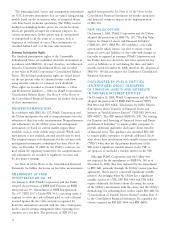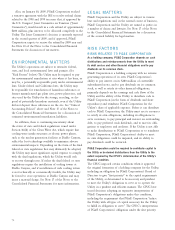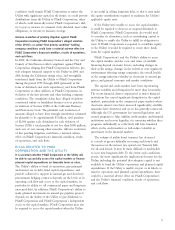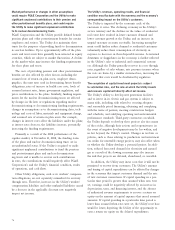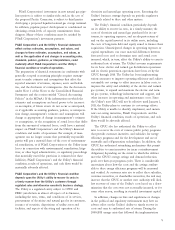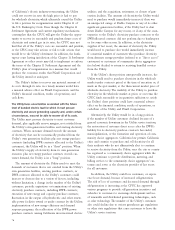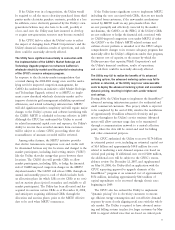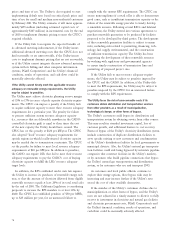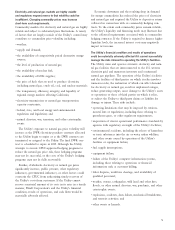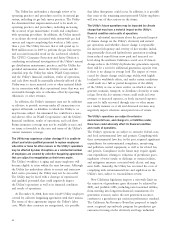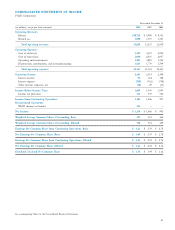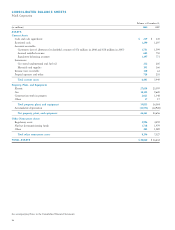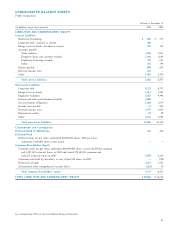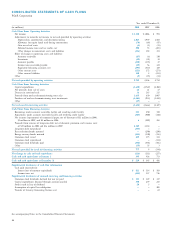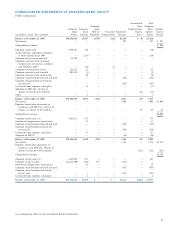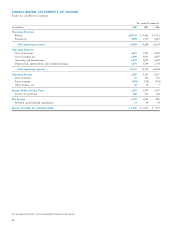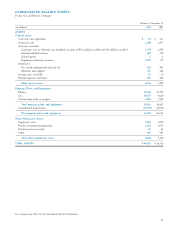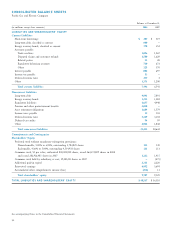PG&E 2008 Annual Report Download - page 82
Download and view the complete annual report
Please find page 82 of the 2008 PG&E annual report below. You can navigate through the pages in the report by either clicking on the pages listed below, or by using the keyword search tool below to find specific information within the annual report.80
that labor disruptions could occur. In addition, it is possible
that some of the remaining non-represented Utility employees
will join one of these unions in the future.
The Utility’s future operations may be impacted by climate
change that may have a material impact on the Utility’s
fi nancial condition and results of operations.
There is substantial uncertainty about the potential impacts
of climate change on the Utility’s electricity and natural
gas operations and whether climate change is responsible
for increased frequency and severity of hot weather, includ-
ing potentially decreased hydroelectric generation resulting
from reduced runoff from snow pack and increased sea
level along the northern California coastal area. If climate
change reduces the Utility’s hydroelectric generation capacity,
there will be a need for additional generation capacity even
if there is no change in average load. The impact of events
caused by climate change could range widely, with highly
localized to worldwide effects, and under certain conditions
could result in a full or partial disruption of the ability
of the Utility or one or more entities on which it relies to
generate, transmit, transport, or distribute electricity or natu-
ral gas. Even the less extreme events could result in lower
revenues or increased expenses, or both; increased expenses
may not be fully recovered through rates or other means
in a timely manner or at all, and decreased revenues may
negatively impact otherwise anticipated rates of return.
The Utility’s operations are subject to extensive
environmental laws, and changes in, or liabilities under,
these laws could adversely affect its fi nancial condition
and results of operations.
The Utility’s operations are subject to extensive federal, state,
and local environmental laws and permits. Complying with
these environmental laws has, in the past, required signifi cant
expenditures for environmental compliance, monitoring
and pollution control equipment, as well as for related fees
and permits. Compliance in the future may require signifi -
cant expenditures relating to reduction of greenhouse gases,
regulation of water intake or discharge at certain facilities,
and mitigation measures associated with electric and mag-
netic fi elds. Generally, the Utility has recovered the costs of
complying with environmental laws and regulation in the
Utility’s rates, subject to reasonableness review.
New California legislation imposes a state-wide limit on
the emission of greenhouse gases that must be achieved by
2020, and prohibits LSEs, including investor-owned utilities,
from entering into long-term fi nancial commitments for
generation resources unless the new generation resources
conform to a greenhouse gas emission performance standard.
The California Air Resources Board has proposed to imple-
ment a regional cap-and-trade program for greenhouse gas
emissions focusing on the electricity and large industrial
The Utility has undertaken a thorough review of its
operating practices and procedures used in its natural gas
system, including its gas leak survey practices. The Utility
has determined that improvements need to be made to
operating practices and procedures, including increasing
the accuracy of gas maintenance records and compliance
with operating procedures. In addition, the Utility intends
to accelerate the work associated with system-wide gas leak
surveys and targets completing this work in a little more
than a year. The Utility forecasts that it will spend up to
$100 million more in 2009 to perform the gas leak surveys
and associated remedial work on the accelerated schedule.
The CPUC’s Consumer Protection and Safety Division is
conducting an informal investigation of the Utility’s natural
gas distribution maintenance practices, and the Utility has
provided information about the Utility’s review and the
remedial steps the Utility has taken. PG&E Corporation’s
and the Utility’s fi nancial condition, results of operations,
and cash fl ows would be materially adversely affected if the
Utility were to incur material costs or other material liabili-
ties in connection with these operational issues that were not
recoverable through rates or otherwise offset by operating
effi ciencies or other revenues.
In addition, the Utility’s insurance may not be suffi cient
or effective to provide recovery under all circumstances or
against all hazards or liabilities to which the Utility is or
may become subject. An uninsured loss could have a mate-
rial adverse effect on PG&E Corporation’s and the Utility’s
fi nancial condition, results of operations, and cash fl ows.
Future insurance coverage may not be available at rates and
on terms as favorable as the rates and terms of the Utility’s
current insurance coverage.
The Utility may experience a labor shortage if it is unable to
attract and retain qualifi ed personnel to replace employees
who retire or leave for other reasons or the Utility’s operations
may be affected by labor disruptions as a substantial number
of employees are covered by collective bargaining agreements
that are subject to renegotiation as their terms expire.
The Utility’s workforce is aging and many employees will
become eligible to retire within the next few years. Although
the Utility has undertaken efforts to recruit and train new
fi eld service personnel, the Utility may not be successful.
The Utility may be faced with a shortage of experienced
and qualifi ed personnel that could negatively impact
the Utility’s operations as well as its fi nancial condition
and results of operations.
At December 31, 2008, there were 14,649 Utility employees
covered by collective bargaining agreements with three unions.
The terms of these agreements impact the Utility’s labor
costs. While these contracts are renegotiated, it is possible


